
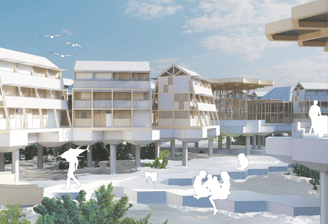

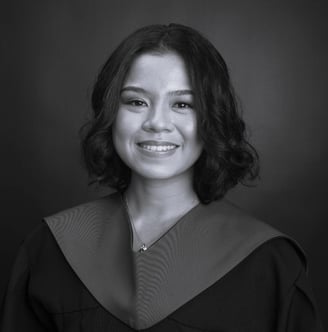

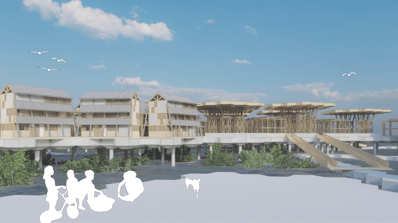


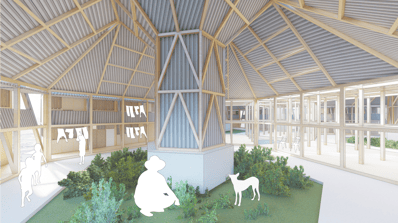
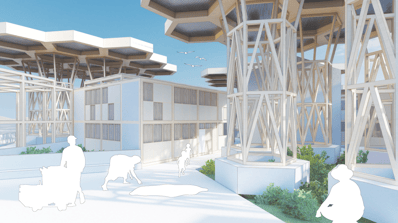





THE COAST IS CLEAR:
The question of the living conditions of vulnerable coastal communities against natural disasters has been widely debated across various fields. While political authorities suggest schemes for community evacuation, relocation and resettlement, professionals in the social sciences understand the limited mobile capacity yet high resilience threshold of these communities. This presents a gap in the knowledge of interventions that strengthen resilience in vulnerable coastal communities against climate change and urbanization by minimizing external subordination and maximizing the design potential of their homes.
This study seeks to answer the question: how can Architectural design aid in strengthening overall resilience in marginalized fisherfolk community settlements in the context of climatechange and urbanization? Specifically, it explores related literature on vulnerable coastal communities and relevant architectural interventions that suggest methods for coastal revitalization and post-disaster reconstruction. These were studied against the current living conditions of the marginalized fisherfolk community of Isla Pugad, in order to propose an adaptive housing framework for the island and similar communities. In this pursuit, this study sheds new light on the neglected issue of vulnerable marginalized communities pressured by the effects of climate change and urbanization.
Gabriela Torres
University of the Philippine
